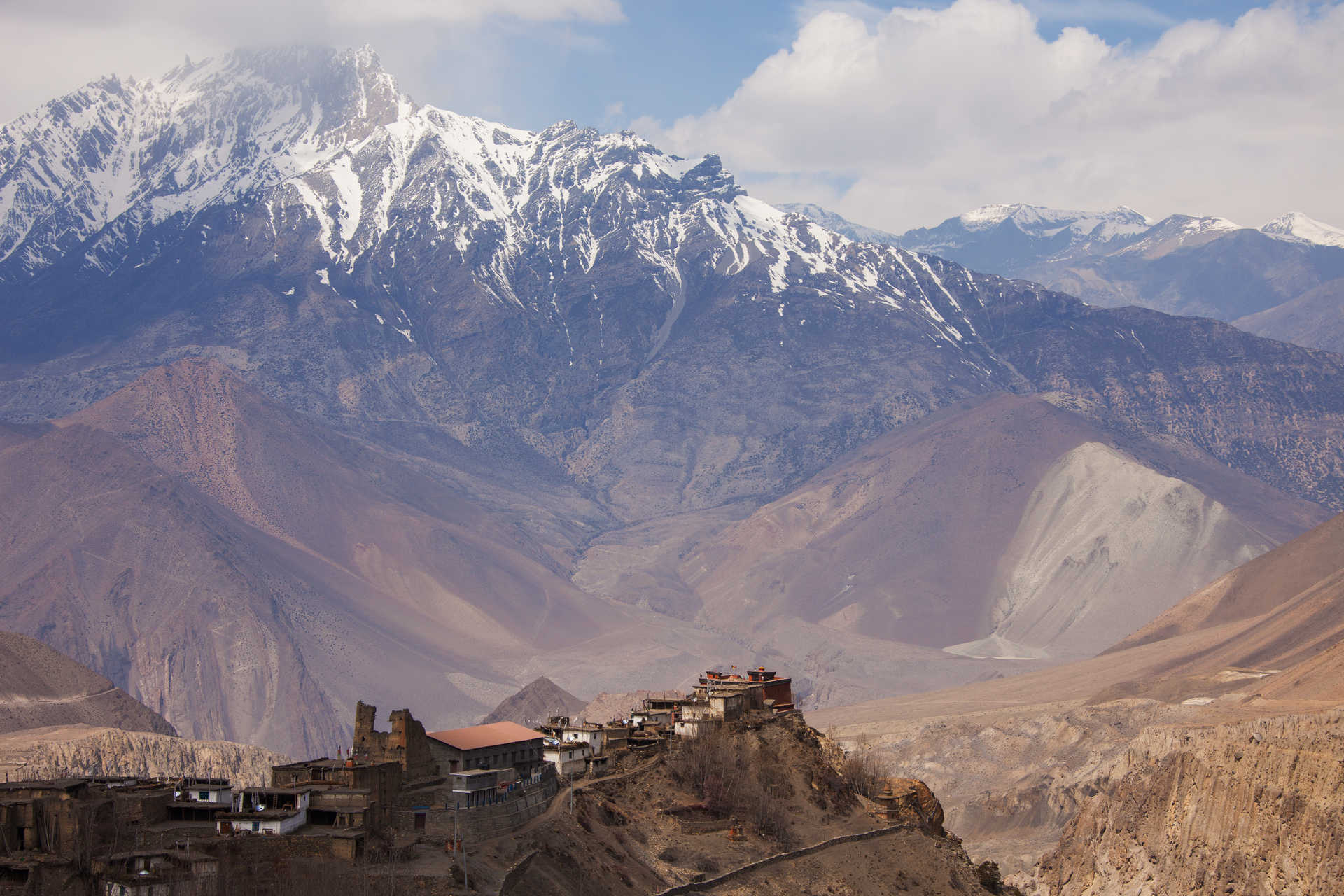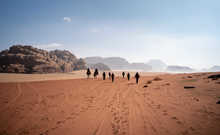The Chomolhari Trek
- Kandoo Trekking

Contact
our UK team

The Kandoo team will meet you at Paro airport and transfer you to your pre-trek hotel. Later in the afternoon there is the option to join a tour of the city. Once a watchtower, built to defend Rinpung Dzong during inter-valley wars of the 17th century, Ta Dzong was inaugurated as Bhutan's National Museum in 1968. It holds a fascinating collection of art, relics, religious thangkha paintings and Bhutan's exquisite postage stamps. The museum’s circular shape augments its varied collection which is displayed over several floors. Afterwards, we will take a walk down a hillside trail to visit Rinpung Dzong, which has a long and very interesting history. Built in 1646 by Shabdrung Ngawang Namgyal, the first spiritual and temporal ruler of Bhutan, the Dzong houses the monastic body of Paro, the office of the Dzongda (district administrative head) and Thrimpon (judge) of Paro district. The approach to the Dzong is through a traditional covered bridge called Nemi Zam, which offers a good view of the architectural wonder of the Dzong as well as life around it. Later you will attend a pre-trek briefing with your Lead Guide to prepare you for the journey ahead
In the morning we will take an excursion to Taktshang Lhakhang, commonly known as 'The Tiger’s Nest Monastery'. Undoubtedly one of the most famous of Bhutan’s monasteries, the Taktshang monastery is one of the most breath-taking temples in the world. This Buddhist place of worship is perched on a cliff-top at around 3,100m (10,000ft) above sea level. The main temple complex was built in 1692, and is considered to be one of the holiest for the Bhutanese people. Legend has it that Guru Rinpoche, an 8th-century Indian Buddhist master, arrived here on the back of a tigress and meditated at this monastery, thus the name ‘Tiger’s Nest’. The site has been recognized as a sacred place and is now visited by all Bhutanese at least once in their lifetime. On 19 April, 1998, a fire severely damaged the main structure of building but now this Bhutanese jewel has been restored to its original splendour.
After lunch we will visit the 7th century Kyichu Lhakhang, one of the 108 temples built in the Himalayas by Tibetan King, Songtsen Gampo. The building of this temple marks the introduction of Buddhism to Bhutan. We will then drive to Drukgyel Dzong, a ruined fortress where Bhutanese warriors fought Tibetan invaders centuries ago. In the early 1950s, Drukgyel Dzong was almost completely destroyed by fire. It is now listed in Bhutan's Tentative List for UNESCO inclusion. In 2016, the Prime Minister Lyonchen Tshering Tobgay, announced that the Dzong will be rebuilt and reinstated to its former glory. The snowy dome of sacred Chomolhari (7326m), ‘the Bride of Kangchenjunga', can be seen in all her glory from the approach road to the Dzong. After our tours we will return to our hotel in Paro
After a 2 hour drive through rice terraces, fields of millet and apple orchards, we reach Shana Zampa from where we will start our trek. If the day is clear, we will have our first views of the summit of Chomolhari at the head of the valley. Soon the valley widens and we reach the army post of Gunyitsawa. This is the last stop before Tibet, with a fork in the path leading across the Tremo La (Forbidden Pass) into Tibet. The trail follows the Pa Chhu river, ascending and descending through pine, oak and spruce forests. We enter the Jigme Dorje National Park, the largest protected area in Bhutan. After crossing a bridge to the left bank of the river, we stop for lunch. We then continue along the river, and as we climb higher, the forests are replaced with rhododendron, bamboo and ferns. We cross the river once more before reaching our campsite.
The path ascends, passing a small army camp and chorten. We leave the forest behind and can fully experience the huge mountain vistas. We then follow the river above the tree line, enjoying the stunning views of the surrounding peaks - from here, the views of Chomolhari (7326m) and Jichu Drake (6794m) are superb. Lunch is served at a yak herder’s camp followed by a short walk into the valley which takes us to our campsite at Jangothang, situated below the ice-covered east face of Chomolhari at 4040m
The base camp at Jangothang sits by an old ruined fortress, beneath Mount Chomolhari and its neighbour Jichu Drake. Today we will take an acclimatisation hike to around 4500m for some great views of these two colossal mountains. Following the ‘walk high, sleep low’ principle, this hike will really help with your acclimatisation.
The trail follows the stream before we cross a bridge to the right bank. Now the climb starts up to the first ridge, where we can enjoy breath-taking views of Mt Chomolhari, Mt Jichu Drake and Tsrim Khang. The trail then takes us across a fairly level valley floor until the climb to the Nyele La Pass (4,850m). From the pass we descend gradually through rhododendron forest to our campsite at Lingshi, enjoying the panoramic view of the mountain peaks and Lingshi Dzong as we walk. The Dzong was built in 1668 to protect villages in this region from Tibetan invasion, and continues to be used as an administrative centre.
Today is the toughest day of our trek, as we cross our highest pass. We begin the trek with a climb up towards a small white chorten on a ridge, then turn south into the deep Mo Chhu valley. The trail stays on the west side of this largely treeless valley, climbing steeply. It then crosses the river, and continues to climb steeply for two hours to Yale La pass (4,950m). On a clear day, you can see Chomolhari, Gangchhenta, Tserim Khang and Masang Gang. We then descend alongside a stream until we reach Shodu.
Back below the tree line, our path follows the course of the Thimphu Chhu river, descending through rhododendron, juniper and mixed alpine forests. There are stunning views of rocky cliff faces and waterfalls along the way before we descend a steep stone staircase to the river and stop at the riverside for lunch. Then the trail takes us gradually upwards to the ruins of Barshong Dzong (3,710m), where we camp for the night.
The trail descends gently through a dense forest of rhododendron, birch and conifers, then drops steeply to meet the Thimphu Chhu river. The trail runs along the left bank of the river, climbing over ridges and descending into gullies where streams run down into the river. The final stage of the trail climbs around a cliff face high above the Thimphu Chhu river, coming out onto pastureland at Dolamkencho at 3,320m. Our transport will meet us here and we will drive to Thimphu, which takes about 1 hour. Your hotel will be a welcome sight!
We start this morning in Bhutan’s capital city with a visit to the National Library, which holds a vast collection of ancient Buddhist texts and manuscripts. We will also visit the nearby Institute for Zorig Chusum, the Textile Museum, and finally Simply Bhutan, a living Museum and Studio encapsulating the cultural heritage of the Bhutanese people. (Please note some sites will be closed on weekends and public holidays). After lunch we will leave Thimphu and drive up a series of zigzags to Dochu-La Pass (3,088m) stopping briefly here to take in the view and admire the chorten, mani wall, and prayer flags which decorate the highest point on the road. After crossing the pass, the road descends into the Paro Valley, where we will spend the night in a hotel.
We will collect you from your hotel and transfer you to Paro Airport for your flight
In addition to the drinking water
we provide on the trek, we will also provide drinking water during your
cultural tours. To reduce the use of plastic bottles, we would ask that you
bring a re-usable drinks bottle that we can fill for you. If you are planning
on using a hydration bag for the trek, this may not be comfortable to use
around town, so we recommend you bring a smaller drinks bottle as well.
Kandoo use good quality, spacious
tents to ensure you stay warm, dry and comfortable on your Bhutanese
trek. They are designed to sleep three people, but we only ever sleep 2 to a
tent, to ensure you have plenty of space for you and your gear. An insulated mat will also be provided. Keep in mind,
these are proper mountain tents, designed to cope with extreme conditions so
don’t expect to be able to stand up and walk around inside! Your meals
will be taken in a separate mess tent where you will be able to sit
comfortably, while you relax and chat to your team mates and enjoy some of the
delicious food that our cook has freshly prepared for you. Inside, you’ll be
pleased to find a table (of course) and a proper, comfortable chair with arms.
With a full 2 metres of headroom, even the tallest climbers will be able to
stretch a bit, and move about without hunching over.
Bhutan is
a cash economy and credit cards are not commonly accepted. Mastercard may be
accepted in larger shops and hotels, but Amex is rarely accepted. If you are
relying on a credit or debit card for emergency funds while you travel, make
sure you tell your card issuer that you will be using it abroad, or you may
find that it won't work when you really need it.
UPPER
BODY
LEGS
FEET
OTHER
ACCESSORIES
| From | To | Price | Availability | Book | Enquire |
|---|---|---|---|---|---|
| 27/04/2025 | 07/05/2025 | £3,149 $4,095 |
Guaranteed
|
Book now | Enquire now |
| 11/05/2025 | 21/05/2025 | £3,149 $4,095 |
Guaranteed
|
Book now | Enquire now |
| 06/09/2025 | 16/09/2025 | £3,149 $4,095 |
Guaranteed
|
Book now | Enquire now |
| 24/09/2025 | 04/10/2025 | £3,149 $4,095 |
Guaranteed
|
Book now | Enquire now |
| 11/10/2025 | 21/10/2025 | £3,149 $4,095 |
Guaranteed
|
Book now | Enquire now |
| 22/10/2025 | 01/11/2025 | £3,149 $4,095 |
Guaranteed
|
Book now | Enquire now |
| 08/11/2025 | 18/11/2025 | £3,149 $4,095 |
Guaranteed
|
Book now | Enquire now |
| 22/11/2025 | 02/12/2025 | £3,149 $4,095 |
Guaranteed
|
Book now | Enquire now |
| 21/02/2026 | 03/03/2026 | £3,149 $4,095 |
Guaranteed
|
Book now | Enquire now |
| 07/03/2026 | 17/03/2026 | £3,149 $4,095 |
Guaranteed
|
Book now | Enquire now |
| 21/03/2026 | 31/03/2026 | £3,149 $4,095 |
Guaranteed
|
Book now | Enquire now |
| 28/04/2026 | 08/05/2026 | £3,149 $4,095 |
Guaranteed
|
Book now | Enquire now |
| 12/05/2026 | 22/05/2026 | £3,149 $4,095 |
Guaranteed
|
Book now | Enquire now |
| 05/09/2026 | 15/09/2026 | £3,149 $4,095 |
Guaranteed
|
Book now | Enquire now |
| 07/11/2026 | 17/11/2026 | £3,149 $4,095 |
Guaranteed
|
Book now | Enquire now |
| 21/11/2026 | 01/12/2026 | £3,149 $4,095 |
Guaranteed
|
Book now | Enquire now |
Want to ask us a question or book a private trip? Don't hesitate to contact us!
Contact us